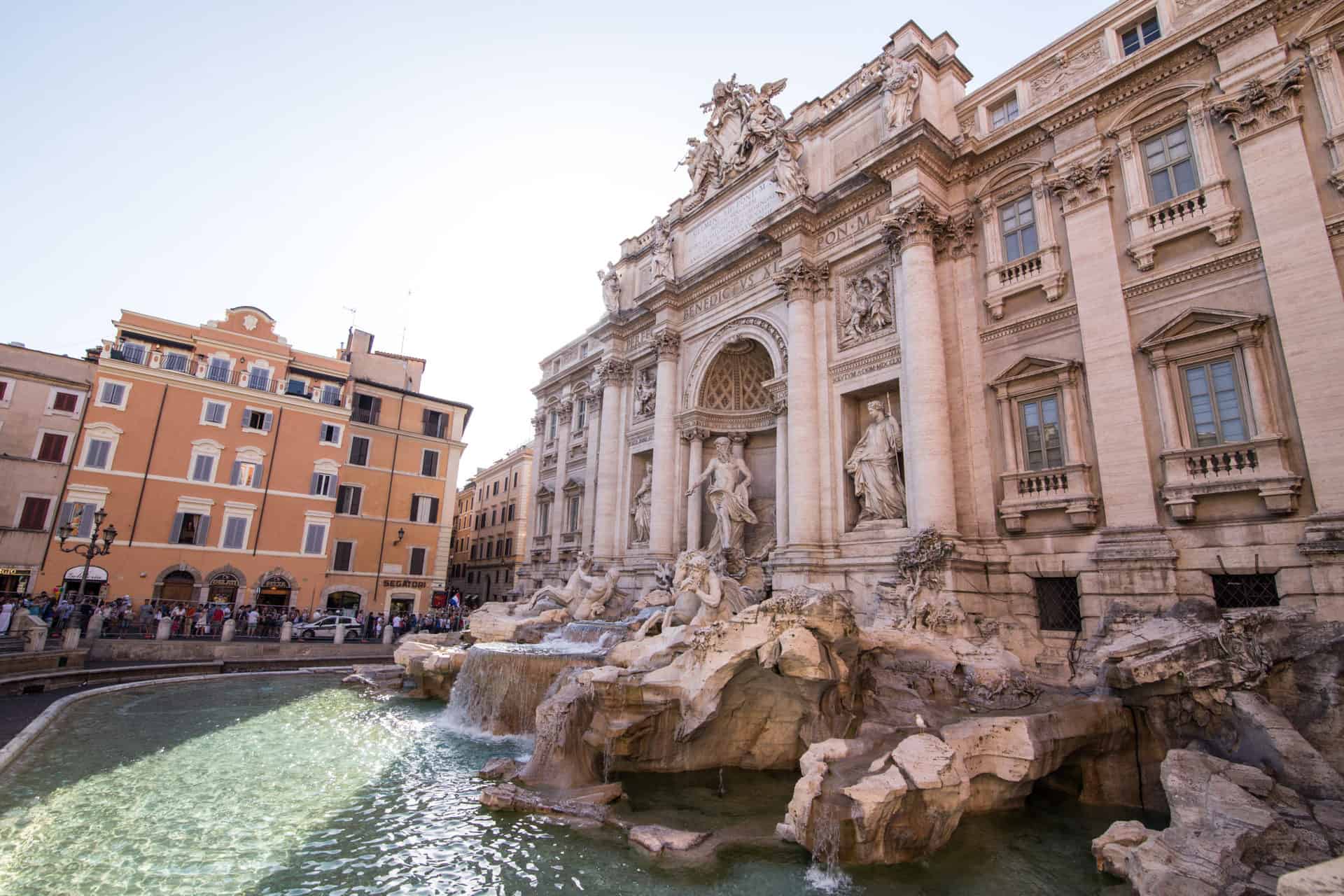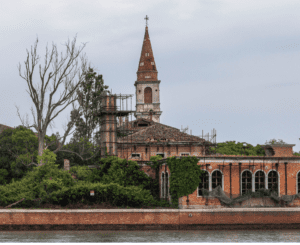The Battlefields of the World: Tracing Warfare from Gettysburg to Gallipoli

Updated On: April 29, 2024 by Maha Yassin
Throughout history, battlefields have shaped the narratives of nations and the course of world events. From the American Civil War’s pivotal confrontation at Gettysburg to the tragic Gallipoli Campaign during World War I, these sites have witnessed conflict, heroism, and the harsh realities of war. Gettysburg and Gallipoli, in particular, stand as a testament to the military strategies, leadership dynamics, and profound human costs that battle exact from combatants and nations alike.
Gettysburg’s terrain and the Gallipoli’s shores are etched into collective memory, each representing a unique geographical and historical theatre of war. The former symbolises a turning point in the American Civil War, marked by significant leadership under General George Meade and General Robert E. Lee. Gallipoli, meanwhile, is synonymous with the international impacts of warfare and the emergence of national consciousness in countries like Australia and New Zealand.
These battlefields are not just remnants of the past but ongoing classrooms of history. They offer insight into the tactics and challenges of warfare, the profound losses incurred, and the subsequent legacy left in their wake. As commemorative sites, they continue to resonate with questions about sacrifice, conflict, and the pursuit of peace.
Historical Context and Significance of the Battlefields of the World

Before delving into the specific battles and their impacts, it’s crucial to understand how these historic conflicts not only shaped the tactics and technologies of warfare but also left indelible marks on global politics and societies.
Major Conflicts and World Impact
The American Civil War, particularly the Battle of Gettysburg, remains a pivotal point in history due to its considerable casualties and President Lincoln’s subsequent Gettysburg Address, which eloquently redefined the war’s purpose and the nation’s ideals. On another front, World War I — or the First World War — epitomised the destructive power of modern industrialised conflict, especially in battles like Gallipoli. This campaign, marked by many casualties, holds a significant place in Australian and Turkish history, influencing the annual commemoration of Anzac Day in both countries.
Europe saw drastic changes to its political map post-World War I, while countries like France faced profound social and physical reconstruction due to the war’s devastation. The far-reaching consequences of these conflicts continue to be felt worldwide, shaping contemporary international relations and national identities.
Evolution of Warfare Through History
Warfare has continuously evolved, from the strategies of generals like Robert E. Lee in the Civil War to the technological advancements of World War I. Battles such as Gettysburg highlighted changes in military tactics due to the introduction of rifled barrels and ironclad ships. By contrast, the Great War saw a shift from traditional to trench warfare, which heavily relied on artillery and introduced chemical weapons.
The transformation in war techniques demonstrates technological advancements and reflects how military theory has adapted to new realities. The progression from 19th-century warfare to the large-scale conflicts of the 20th century encapsulates a period in history where the nature of battle changed dramatically, influencing how countries would engage in future warfare.
Geographical Focus: Europe and The Dardanelles

In this section, we focus on the key strategic locations within Europe that played pivotal roles in military history, particularly the Gallipoli peninsula and its surrounding areas, and the significance of Gettysburg during the American Civil War.
Strategic Importance of Gallipoli and Surrounding Areas
Gallipoli, located on the edge of the Dardanelles Strait in modern-day Turkey, is renowned for its historical significance. During the First World War, the Gallipoli Campaign aimed to secure the strait, a vital maritime route linking the Sea of Marmara with the Aegean and Mediterranean seas to the Black Sea. Control over the Dardanelles would enable the allied forces to support Russia and potentially force Turkey out of the war.
The Gallipoli peninsula became the focal point of a tragic and costly campaign. In 1915, the Allied troops attempted to take the peninsula to open a path to Constantinople (now Istanbul), intending to knock the Ottoman Empire out of the war. The terrain of Gallipoli proved to be a formidable challenge, offering the defending forces the opportunity to repel the attackers, leading to a prolonged and harrowing stalemate.
Gettysburg’s Place in the American Civil War
The Battle of Gettysburg was a crucial turning point in the American Civil War. In Pennsylvania, Gettysburg was the site of a three-day battle from 1 to 3 July 1863. This battle was one of the largest during the war and signified the furthest advance north by the Confederate Army. The Union victory at Gettysburg dealt a significant blow to the Confederate forces and is often regarded as the high-water mark of the Confederacy.
Gettysburg’s geographical location made it strategically important as it sat at the junction of multiple roads leading across various parts of the country. This accessibility is partly why it became a place of such strategic contention, eventually solidifying its place in history.
Our focused exploration highlights the critical value of geographical locations in warfare. From the shores of Gallipoli to the fields of Gettysburg, these sites remind us of their influence on the outcomes of some of history’s most profound events.
Key Military Campaigns

In this section, we’ll explore the tactical intricacies and the consequential outcomes of two pivotal military operations: the Gallipoli Campaign and the Battle of Gettysburg.
The Gallipoli Campaign Breakdown
The Gallipoli Campaign, also known as the Dardanelles Campaign, was a significant endeavour during the First World War between 1915 and 1916. Aimed at securing a sea route to Russia, the Allies planned to capture the Ottoman capital of Constantinople through naval and land assaults. The ambitious operation began with a failed naval attack on the Dardanelles, followed by a land invasion on the Gallipoli Peninsula, including ANZAC Cove and Suvla Bay.
- Objective: Establish a sea route to Russia by capturing Constantinople (Istanbul).
- Primary Theatres: ANZAC Cove, Suvla Bay, and other sectors on the Gallipoli Peninsula.
- Outcome: Stalemate and eventual evacuation of Allied forces.
Despite the bravery demonstrated by troops, particularly the ANZAC (Australian and New Zealand Army Corps) soldiers, the campaign could not overcome the tactical challenges posed by the terrain and the resilient Ottoman defence, leading to a heavy loss of life and, ultimately, retreat.
Analysis of the Battle of Gettysburg
The Battle of Gettysburg, a crucial conflict during the American Civil War in July 1863, is often considered the war’s turning point. This confrontation in Pennsylvania saw Union and Confederate forces collide in what became the most massive battle fought on North American soil.
- Objective: Confederate General Robert E. Lee aimed to invade the North and achieve a decisive victory on Union soil.
- Key Locations: Gettysburg’s diverse landscape features locations such as Little Round Top and Culp’s Hill.
- Outcome: Union victory marked the end of Lee’s invasion of the North.
Over three days of intense battle, Union forces managed to hold key positions, with significant engagements such as Pickett’s Charge highlighting the offensive desperation of the Confederacy. The Union victory at Gettysburg directly impacted the morale and strategic potential of both armies, with the eventual benefit leaning towards the Union, and is commemorated as a turning point that swayed the Civil War in favour of the North.
Commanders and Leadership

Our section focuses squarely on the individuals whose decisions and command styles significantly influenced pivotal battles in world history.
Key Military Figures and Their Decisions
One cannot reflect on the Gallipoli Campaign without considering Winston Churchill, then First Lord of the Admiralty, whose strategic vision was to force a route to Russia. His choice to launch the naval campaign led to the appointment of Admiral Sackville Carden and later Sir Charles Monro. Carden’s initial plan and subsequent execution failed to account for the tenacious defence led by Mustafa Kemal of the Ottoman forces, which included the determined ANZAC (Australian and New Zealand Army Corps) troops.
| Campaign | Key Figure | Decision |
|---|---|---|
| Gallipoli | W. Churchill | Naval attack through Dardanelles |
| Gallipoli | S. Carden | Initial assault plan |
| Gallipoli | C. Monro | Advocated evacuation |
| Gallipoli | M. Kemal | Tenacious defence |
In contrast, during the American Civil War, the Union Army’s leadership under the likes of General George G. Meade at the Battle of Gettysburg significantly determined the outcome of the conflict. His decisions, alongside those by commanders like General John Buford, prefigured the eventual Union victory in pivotal moments, defending key terrain with aggressive tactics.
Impact of Leadership on the War Outcomes
Leadership decisively shaped outcomes; for example, Gettysburg underscored the effectiveness of the Union command structure in yielding a turning point in the American Civil War. On the other hand, the leadership changes from Carden to Monro highlighted the challenges the British and French faced during the Gallipoli campaign. Monro’s eventual evacuation decision demonstrated adaptive leadership in intractable resistance.
The coercive leadership styles in Washington, D.C., particularly under the presidency of Abraham Lincoln, demanded aggressive military action, which later fell under criticism but ultimately preserved the Union. In the British context, leaders like Lord Kitchener and David Lloyd George later juggled the political and military aspects, contributing to the larger narrative of the First World War.
Our understanding of leadership’s impact on war is thus multifaceted, with significant variances depending on individual qualities, decisions made under pressure, and the respective military careers of those in command. The stories from Gettysburg to Gallipoli reinforce our ongoing interest in the intricacies of military leadership and its enduring effect on history.
Tactics and Warfare

In the landscape of global conflicts, tactics and warfare have evolved to meet the geographical and technological challenges of the times. Our focus will delve into the intricate development of trench warfare and the audacious naval strategies that shaped pivotal battles.
Development of Trench Warfare
Trench warfare became a defining tactic of World War I, its inception born from the need to provide cover and a stable defensive position against modern firepower. Soldiers and marines across Europe found themselves in networks of elaborate trenches, leading to a stagnation of movement on the Western Front. The Allies and Central Powers entrenched their forces, creating a battlefield carved into the earth where the slightest gain of territory demanded immense effort and cost many lives.
The trenches were intricate, with frontline, support, and reserve trenches often fortified with barbed wire and sandbags. Life in the trenches was gruelling, marked by deplorable conditions and the constant threat of enemy attack. The introduction of new weapons, such as machine guns and poison gas, made over-the-top charges deadly, forcing commanders to develop more nuanced strategies, including artillery barrages and covert raids.
Naval Strategies in the Dardanelles
Naval strategies during the Gallipoli Campaign were ambitious and risky. The Allies aimed to force open the Dardanelles Strait, allowing battleships to reach and capture Constantinople, thus knocking the Ottoman Empire out of the war. Initial attempts at a naval attack were spearheaded by a fleet of British and French warships in February 1915.
Despite early advances, the campaign turned disastrous due to strong defensive measures by the Ottoman forces and difficult navigational conditions. Mines and artillery fire from the shores decimated allied battleships. The ANZAC troops, involved in an amphibious landing to take control of the Gallipoli peninsula, faced harsh terrain and relentless defence, highlighting the complexity of synchronising land and sea warfare. The Allies’ attempt to control the sea route ultimately failed, illuminating the challenges of military career planning and execution in the face of determined resistance.
Casualties and War Impact

In examining historical battles, the toll on human life and the subsequent legacy left behind are pivotal. Our focus lies in the stark reality of these conflicts’ costs and the indelible marks they imprinted on the world.
Human Cost of the Battles
Gettysburg: The Battle of Gettysburg was a defining moment in the American Civil War, with nearly one-third of participants becoming casualties. Union forces saw a loss of 28%, whereas the Confederate Army faced over 37% casualties. Among these, there were 7,058 recorded fatalities.
Gallipoli: The Gallipoli Campaign, notably involving the ANZAC forces, was equally devastating. This campaign resulted in a considerable number of casualties, with estimates suggesting that the Allies suffered around 141,000 casualties, of which approximately 44,000 were fatal. Ottoman forces also encountered heavy losses, with figures around 251,000, including 86,692 fatalities.
Long-Term Effects on Nations and Individuals
The aftermath of such battles invariably leads to profound long-term effects on both nations and individuals.
Gettysburg: Union victory at Gettysburg was pivotal, marking a turning point in the war, lifting Northern morale, and ultimately impacting the United States’ future.
Gallipoli: The impact of Gallipoli resonates today in Australia and New Zealand, with ANZAC Day serving as a day of remembrance for all soldiers who served and died in all wars. This campaign shaped national consciousness and contributed to an emerging identity separate from colonial ties.
In both conflicts, memorials and cemeteries remain as poignant reminders for the soldiers whose lives were lost, for the civilians caught between the fires of war, and for standing testament to the high price of conflict. These sites serve not only as locations of remembrance but also as education for future generations on the ramifications of warfare.
Commemoration and Legacy

As we reflect on the historic battlefields across the globe, it’s imperative to recognise how the commemoration and legacy of these sites are preserved through monuments and museums and their impact on our national consciousness and identity.
Monuments and Museums Honouring the Fallen
Monuments are everlasting tributes to the courage and sacrifice of those who fought and fell on battlefields like Gettysburg. The legacy of Gettysburg, for instance, is encapsulated through monuments that pepper the landscape, honouring both Union and Confederate soldiers. Museums play a crucial role in narrating the events, offering visitors a portal into the past.
Ranging from simple headstones in cemeteries to grand memorials, these structures provide a place for reflection and remembrance. Anzac Day ceremonies, particularly at sites such as Gallipoli, embody the enduring spirit and courage of the soldiers, ensuring that their efforts are forever enshrined in our memory.
The Role of Remembrance in National Identity
Remembrance rituals and educational programmes forge a ‘new birth of freedom’, fostering a sense of national unity and consciousness. National landmarks like the battlefields of the World War have become intrinsic parts of the cultural fabric that share and shape the narratives of nations. Through collective remembrance, societies affirm their values and historical significance, strengthening the ties that bind the present to the past.
This respect and reverence for the fallen transcend borders, further influencing how we collectively view freedom, sacrifice, and the cost of war. Maintaining these sacred sites ensures the stories and bravery they represent are never forgotten, cementing their significance in shaping our national identity.
The Gallipoli and Gettysburg Today

The Gallipoli and Gettysburg battlefields stand today as poignant reminders of our past, preserved and visited by many who seek to understand the complexities of history.
Preservation and Tourism at Historic Battle Sites
At Gettysburg in the United States, the Gettysburg National Military Park is a tribute to the soldiers who fought in one of the most significant battles of the American Civil War. The park offers a range of experiences, including battlefield tours, which allow visitors to traverse the hallowed grounds where historical events unfolded. The on-site museums delve deeply into the narratives of the war, complemented by educational programs to enhance the public’s understanding.
Turning our gaze to Turkey, the Gallipoli Peninsula stands as a site of international significance, commemorating the brave soldiers of the Gallipoli campaign during the Great War. Anzac Cove and Shrapnel Valley remain solemn destinations as part of the battlefield tour, where guided tours illuminate the stories of heroism and sacrifice. Memorials and cemeteries mark the landscape here, diligently cared for to honour the fallen.
Educational Value and Public Interest
The educational merit of these sites cannot be overstated. Visiting Gallipoli and Gettysburg provides immersive learning opportunities beyond the confines of a classroom. At both locations, dedicated guided tours enable us to offer profound insights into the history of these battles, resonating with visitors from across the world.
Our interest in these sites underlines their symbolic value, reflecting on past conflicts and the enduring human spirit. Through preservation and education, we believe these battlefields continue to foster a deeper understanding among the public, reminding us of the importance of peace and the costs of war.
FAQs

This section answers some of the most commonly asked questions regarding historical battlefields worldwide.
What are the key sites to visit on a WW2 battlefield tour in Europe?
On a WW2 battlefield tour in Europe, key sites include the Normandy beaches of D-Day, the Battle of the Bulge’s snowy Ardennes forests, and the stark remnants of the Warsaw Ghetto.
Which tours cover both WW1 and WW2 European battlefields comprehensively?
Tours offering comprehensive coverage of WW1 and WW2 European battlefields often include the Flanders Fields, where WW1’s trench warfare was notoriously fierce, and the Hürtgen Forest in Germany, a major WW2 battleground.
Can one still observe the original trenches from the Gallipoli campaign?
Yes, one can still observe the original trenches from the Gallipoli campaign. The preserved trenches at ANZAC Cove and Lone Pine offer a vivid glimpse into the past.
Which American Civil War battlefields can be toured in the vicinity of Gettysburg?
In the vicinity of Gettysburg, one can tour several Civil War battlefields, such as the Antietam National Battlefield in Maryland and the Manassas National Battlefield Park in Virginia.
In the Gallipoli campaign, what factors contributed to the attack’s failure?
The failure of the Gallipoli campaign can be attributed to tough terrain, underestimated Ottoman resistance, and strategic missteps, including flawed planning and coordination by the Allied forces.
At which locations in Europe did the largest numbers of Australian soldiers fight during the World Wars?
During the World Wars, the largest Australian soldiers fought at locations such as the Western Front in France and Belgium, including the Somme, Ypres, and Passchendaele.






